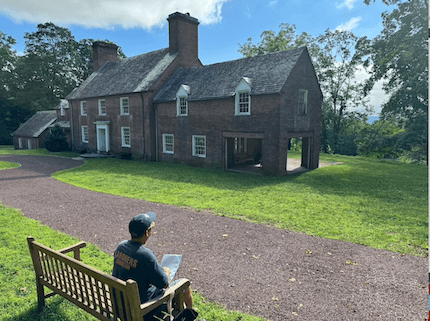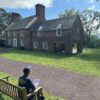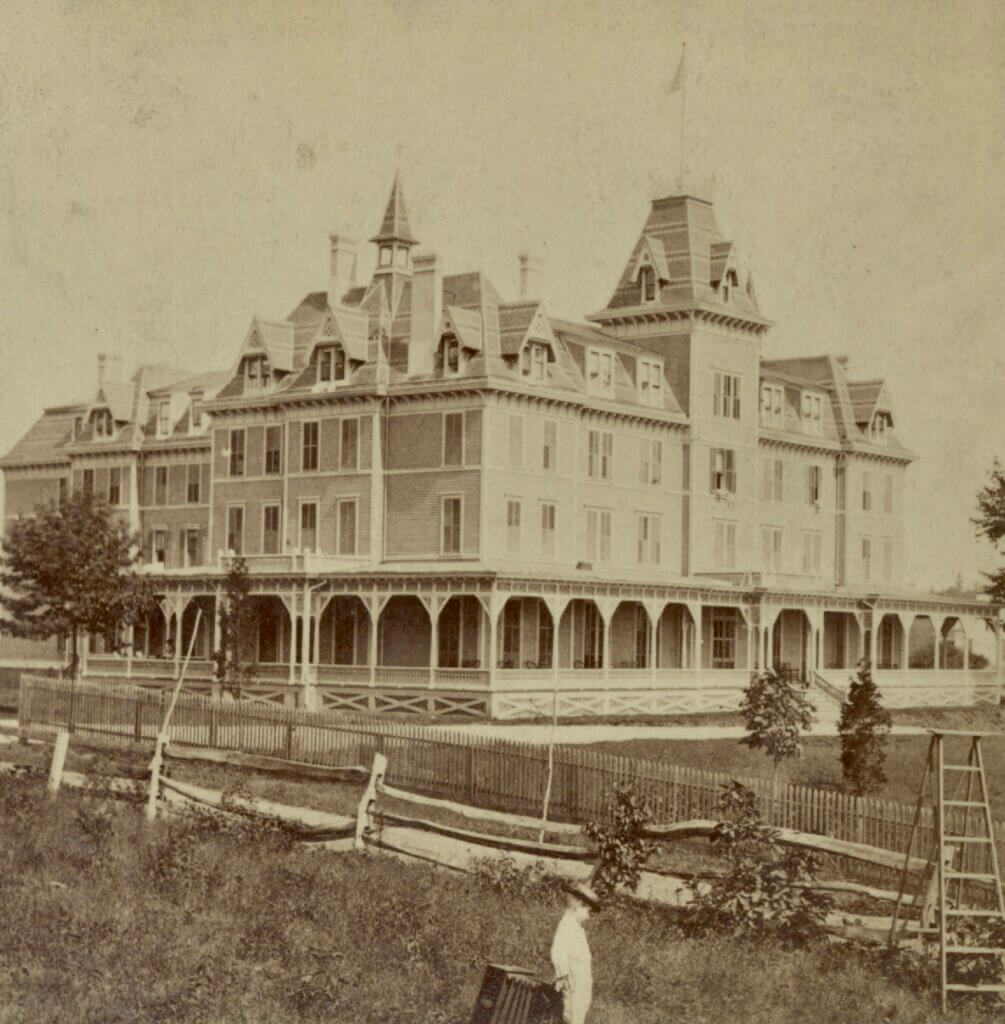
“Where’s the fire?” Nyack firemen shouted to each other after they heard the alarm. Precious minutes were lost. “Prospect House,” someone shouted. It was a long haul uphill from the firehouses in the valley below the hotel on South Mountain. By the time horse-drawn and human-drawn fire wagons approached, the western part of the 200-room hotel was totally ablaze. The windows of rooms where President Grover Cleveland and best-selling American novelist, Winston Churchill had once stayed lit up briefly as if a room light had been turned on. The fire was visible from Ossining to Dobbs Ferry.
Even with the best efforts of every local volunteer from every local fire department bolstered with 60 urns of coffee, the June 2, 1898 fire destroyed Nyack’s largest and most ornate summer resort hotel. The riches to ashes event marked the end of Nyack’s time as a go-to place for Gilded Age vacationers. The village changed forever.
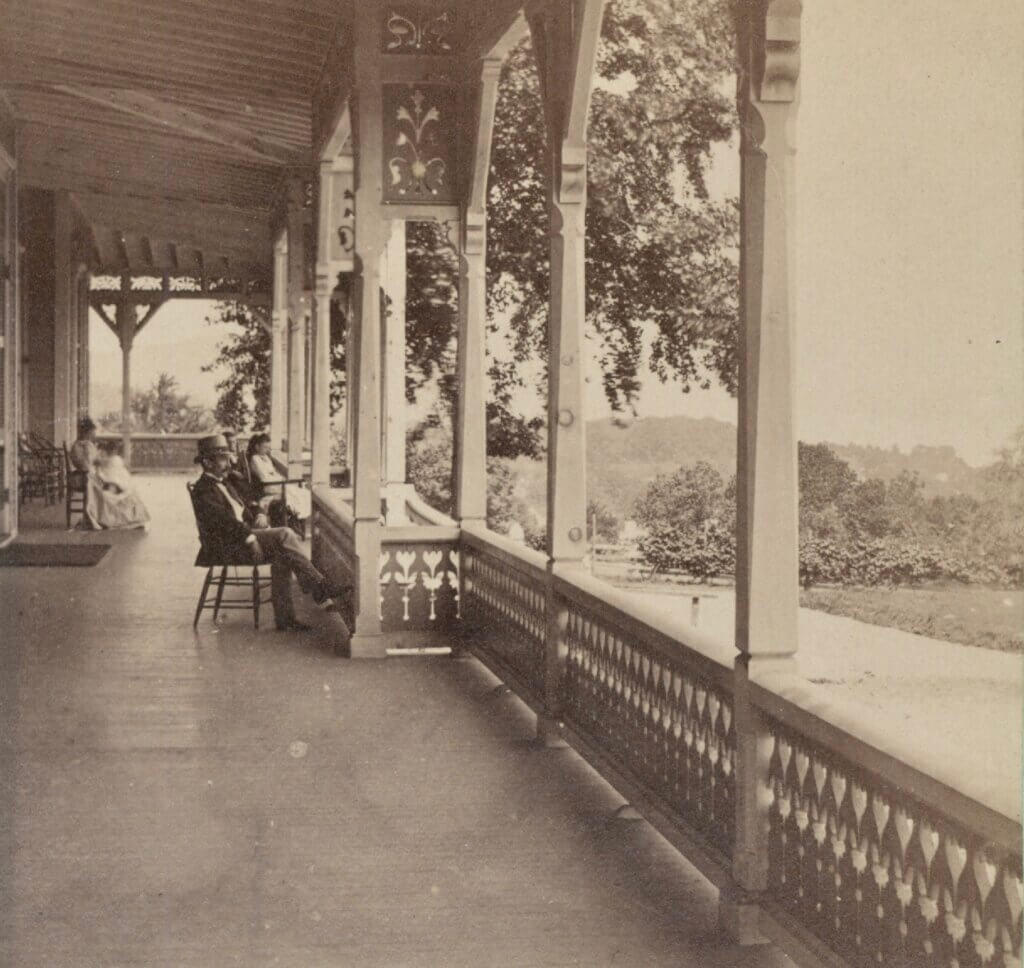
Mrs. Palmer
The 25-year history of the Prospect Hotel is as meteoric as the fire that destroyed it. The hotel burst on the scene under the management of a socially well-connected woman named Mrs. Palmer and she filled it every summer with the wealthy elite of New York and Philadelphia. The hotel was first named the Palmer House. Mrs. Palmer seems to have appeared in Nyack out of thin air. We know little of her prior experience in hotels. Perhaps she is the Mrs. Palmer who advertised in NYC newspapers for summer boarders at a private residence in Cornwall in the late 1860s. She listed an address in Gramercy Park, NYC. A Mrs. R. Palmer also advertised for boarders at the Larchmont Manor House in Mamaroneck in 1872.

Mrs. Palmer was described as an admirable businesswoman, pleasant but stern. She filled the hotel its first summer likely through her own social network since there is no evidence of advertising. Many of the guests were wealthy enough to bring a maid. Mrs. Palmer and her daughter wintered in Europe.


Location of the Prospect House
Palmer House Built in Record Time

Mrs. Palmer acquired property for her hotel at the corner where South Highland AVenue bends to the west in atop South Mountain from J. A. Bennet for $15,000. Bennet himself built the ornate Bennet-Deyrup house at 309 N. Broadway in Upper Nyack. The Prospect House property was a more isolated neighborhood than it is now. Construction began in an open field in late 1872 overseen by Mrs. Palmer. They made fast work of it because the hotel opened in early summer 1873. According to the paper she was “a lady everyway qualified for the arduous undertaking.” Even during construction, reporters noted the breathtaking views,

“A panorama of beauty that the beholder, having once seen, will never forget.”
Rockland County Journal, December 28, 1872
Hotel Built in a T-Shape

The hotel formed a T-shape. The main portion facing the river was 106 feet wide and 50 feet deep. An extension 106 feet long and 49 feet connected to the main building. Each of the four floors had 35 rooms. The dining room was 35 x 48. A 12-foot-wide porch ran around the entire hotel. A laundry house of 27 rooms and stables were in separate buildings.
A later owner enlarged the hotel adding 45 new rooms for a total of 200. The size of the dining room doubled, and separate children’s and servant dining areas built. Several cottages and a bowling alley were added to the property. A sitting area with rustic benches occupied the Prospect House Park behind the hotel. Carriage trails led southwest to the top of the mountain and to Balance Rock. The hotel was noted for its pure mountain water that came from a nearby spring.
Opening Ball
The hotel was full for an opening ball (called “hops” and sometimes “germans” back then) on July 19, 1873. Even guests staying at the Tappan Zee House on the riverfront in South Nyack joined in the fun. Matthew Baird, a wealthy Philadelphia railroad magnate brought his family by private steamboat anchoring at the People’s Dock in Nyack. His wife wore a black silk dress with “magnificent diamonds” to the ball, her daughter, Flora, dressed in white trimmed with blue and diamonds, and daughter Dolly wore white with diamonds. Mrs. Palmer’s daughter Annie attended in style. The Rockland County Journal took pains to describe the dresses and jewelry of some 40 women. Some said that a ‘million dollars’ of jewelry was worn that evening. Many of the men wore black full-dress.

Before music played, guests gathered on the wide porches as twilight lit up the Tappan Zee. The Schilling’s Orchestral Band of NYC began playing precisely at 8:15pp. Everyone took to the dance floor when the orchestra played Les Lanciers, a quadrille for four couples with five dance figures each performed four times so every couple took the lead once. Diamonds glittered among the dancers in the gaslit ballroom . Dancing went on until late in the night.

Prospect House
After five years, around 1878, Thomas Jefferson Porter purchased the hotel and renamed it Prospect House. Porter had previously owned hotels in Saratoga Springs and managed hotels in the Bahamas in the winter months. He was good friends with Grover Cleveland’s brother and had a long friendship with the President, which is undoubtedly the reason that Cleveland became a guest between his Presidencies. Porter expanded the hotel, acquired additional property, and improved the grounds. Porter died in 1895. The Porter estate leased to the hotel to different managers through 1899.

Non-Stop Fun at the Prospect House
Dancing and dining were not the only Prospect House entertainments. Progressive Euchre parties of 16 tables occurred on many days before dinner was served. Dramatic readings and concerts were frequent. Prospect House had its own baseball team composed of the waiters, porters, and bellmen. Croquet tournaments matched the Prospect House guests against the Tappan Zee House guests. Hayrides went up to Rockland Lake. In 1890, a benefit concert at the hotel featured tunes being played on a phonograph, then a rare item.

The hotel held a annual clambake. The 1888 clambake catered by George Bardin the famous chef and owner of the St. George Hotel, featured 5,000 clams, 1,000 saddle rock oysters, 100 lobsters, 100 pounds of sea bass, 100 pounds of spring chicken, 100 ears of sweet corn, and 1 ½ barrels of potatoes.
Fireworks & Cake Walks
The hotel was known for its Fourth of July celebration with fireworks. Villagers were invited. The Nyack Brass Band often played. During the afternoon, guests would turn out to root for their favorites among the largely African American staff competing in a series of events including a 200-yard dash, climbing a greased pole, a three-legged race, a tug of war, and a pie eating contest. Most, if not all, the wait staff were African American. George Avery, a noted African American and long-time waiter at the hotel won the foot race
The hotel held an annual “cake walk” at the Opera House, Nyack’s center of sophisticated entertainment located at the corner of Depew Ave. and Franklin St. White hotel guests would sit in the balcony and watch an African American dance contest called a cake walk, once said to be a form of dance of enslaved people mocking their enslavers. In late July 1891, 12 couples danced. Judges on the main floor eliminated couples one by one until J. F. Parono and Miss Mamie Brown, a frequent annual winner, were declared the victors. The prize was a cake. After the contest, the guests danced, dined at midnight, and resumed dancing until 5:30a.

The Prospect House Fire

How the fire started on June 2 is not positively known. Mr. W. Meserve, the hotel manager of a mere one-month tenure, believed it originated in a kitchen flue and traveled a long way between floors before the watchman smelled smoke. Meserve and a few of the workers found flames on the floor of a room in the northwest section. They tore up the floor and doused it with water, thinking they had stopped the fire.
At 1:45a it was time to call the fire department. It was a hopeless battle for the firemen. It took precious minutes to get up the steep hill from village fire houses. When they arrived the western half of the hotel was already in flames. Wells and cisterns quickly emptied. A steamer pumped a single hose from a fire hydrant at the corner of Cedar Hill and Highland Avenues. It too was inadequate.
Reduced to Ashes
Villagers reported that, at first, the hotel looked like it was fully occupied with each window lit. Once the walls and roof collapsed, the flames were visible from across the Hudson River. The hotel was reduced to ashes and foundation stones. Fortunately, the hotel manager, 24 staff, and the firemen were able to remove the famous parlor rug and other furniture. It seems unusual in such a large fire that so much furniture was saved, but so it was.

Winston Churchill Checks in a Week Early, Survives Fire
Fortunately, no one perished in the conflagration. The opening for the season had been delayed one week. The only guests allowed to arrive early were the Winston Churchill family, who had summered in the Nyacks for many years. They barely escaped with their lives, huddled outside in the dark until some neighbors took them in. Some ten years after the fire, Russel van Nostrand, a fireman, remembered that he picked up a photograph and some cards from the ashes. When he found them again, he recognized the name of America’s best-selling author of the time, Winston Churchill. He sent the famous author a letter to his home in Concord, NH. Churchill was so pleased to receive the only photograph of his mother that he sent a copy of his book to Van Nostrand and a reward.
The Immediate Aftermath
The Porter family estate had no interest in rebuilding the hotel. An auction in October of 1898 on the hotel grounds netted sales of $1,500 on some 3,000 items.
Early the next year, Dr. Louis Klopsch, publisher of The Christian Herald newspaper in New York Cityacquired the property. Klopsch was a noted fundraiser for charitable causes one of which was hosting inner city poor children at summer camps. During the year 1899, the remaining buildings on the grounds of the Prospect House housed the camp. Children occupied the 27-room laundry with a servant’s dining room and kitchen, and the stables.
After a year, Klopsch purchased the R. D. Jewett estate to become the longtime home of the Christian Herald Children’s Home. It was located on Hook Mountain Road, since renamed Christian Herald Road. It is now the home of Camp Ramah.
20th Century Owners
In 1900, the abutter south of the Prospect House, Stephen Rowe Bradley, a wealthy local businessman and the inventor of Orangeburg pipe, purchased the property creating a 37-acre estate. His rambling farmhouse had been built earlier by J. A. Bennet. He moved the Prospect House cottages across the street.


In the early 1920s, Pierre Bernard acquired the Bradley estate for his Clarkstown Country Club. The location of the Prospect house near the Highland Avenues remained an open grassy area. Bernard used it as a baseball diamond and for other outdoor events. Bernard’s property was in turn acquired by Nyack College. The old hotel location became a soccer field. Today Viznitz Yeshiva owns the property.

What the Loss of Prospect House Meant to Nyack
The Prospect House was the premier draw for summer resort guests in the Nyacks. In the same year that the hotel burned, the Pavilion Hotel in downtown Nyack closed. It was the end of an era. It was as if the numerous summer resort guests were a migrating flock that stopped at Nyack for awhile to rest and then moved on. Nyack felt an economic loss. Fewer people came by train and boat to visit. Hundreds of waiters, busboys, janitors, laundry people, and porters most of whom were African Americans, lost their jobs. Orangetown noticed the loss of tax revenue from the hotel. Nyack merchants felt the loss of business from well-heeled customers.
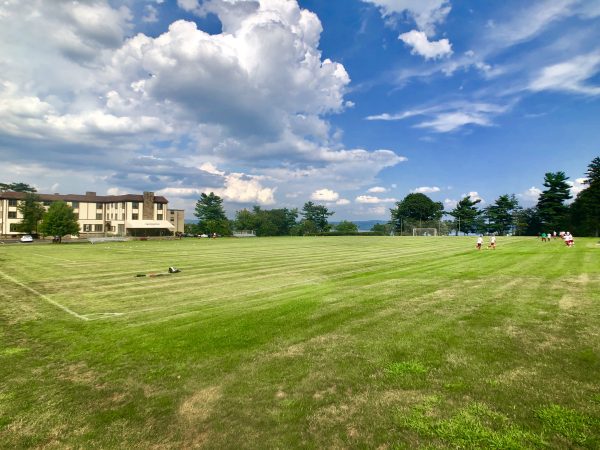
The loss of the now forgotten Prospect House was more than economic. It left an empty space in the soul of the village. The large windswept pennants streaming from the turrets of its ornate towers would fly no more, the fashionable ball gowns gleaming with diamonds became a thing of the past, and the spectacular views from a rocking chair on the shaded porch became a memory. For more that 120 years the location of the old Prospect House has remained undeveloped as if it were some sacred Gilded Age space. May it remain so.
Michael Hays is a 35-year resident of the Nyacks. Hays grew up the son of a professor and nurse in Champaign, Illinois. He enjoyed a long career in educational publishing with Prentice-Hall and McGraw-Hill. He s currently president of the Historical Society of the Nyacks and vice president of the Edward Hopper House Museum & Study Center. Hays is an avid cyclist, amateur historian and photographer, gardener, and dog walker. He has enjoyed more years than he cares to count with his beautiful companion, Bernie Richey. You can follow him on Instagram as UpperNyackMike.





